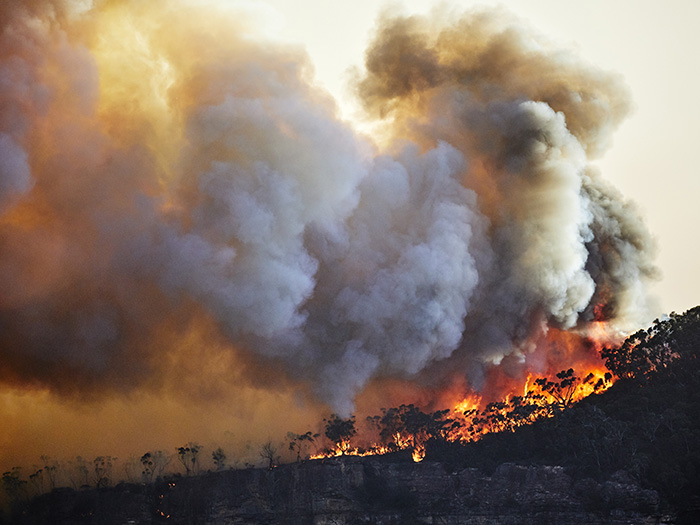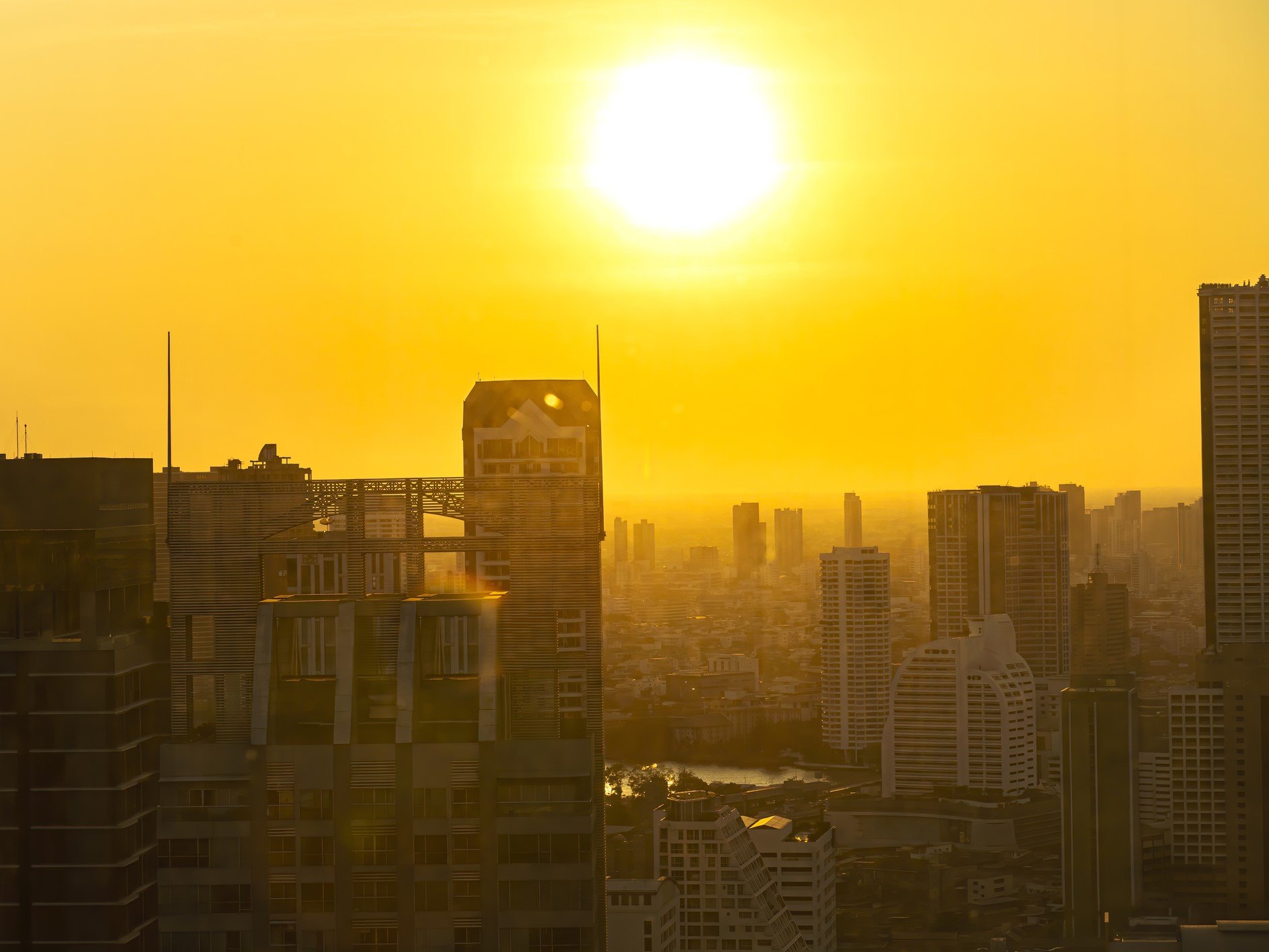NFP’s Cran Fraser on the Baltimore Bridge Collapse, Canal Troubles, and the Supply Chain ‘Butterfly’ Effect

Dan Reynolds, Editor in Chief of Risk & Insurance, recently sat down with Cran Fraser, Vice President of Energy and Marine at NFP, to discuss the “butterfly effect” of supply chain disruptions, the impact of geopolitical tensions on shipping routes, and strategies for managing these risks.
What follows is a transcript of that conversation, edited for length and clarity.
R&I: What is the “butterfly effect” in the context of supply chain delays and interruptions?
CF: The butterfly effect refers to a small ripple or fluttering of a butterfly having huge effects down the food chain. In the context of supply chains, a small delay, such as a ship being diverted from the Suez Canal, can have significant implications further down the chain.
For instance, a ship that was supposed to go through the Suez Canal but now has to divert adds 10 to 25 days to its journey, depending on its destination. This delay affects the timely delivery of cargo, whether it’s oil, gas, grain, commodities, or containers. Upon reaching its destination, the ship’s berth may or may not be available, further disrupting the just-in-time delivery of the particular commodity.
This diversion not only adds time to the equation but also increases costs, such as the cost of transit, charter, crew, and the time the vessel spends on the way. Therefore, a seemingly small diversion can have a substantial logistical impact and significant downstream effects, which is what I mean by the butterfly effect in supply chain disruptions.
R&I: Can you quantify the current impact of the volatility in the Red Sea on shipping and commerce, particularly in light of the recent headlines?
CF: The impact on commerce is substantial, with estimates suggesting that Egypt’s GDP has been reduced by a staggering 20% due to ships being diverted from the area. This is a huge economic blow to the region.
Initially, there were reports that only US, Israeli, UK, or NATO ships would be targeted. However, recent incidents involving Russian or Chinese ships have called this into question. It remains unclear whether these incidents were intentional or accidental, as there were previous indications that Russian and Chinese ships were considered safe to pass through the area.
R&I: Have you observed broader economic impacts from the Suez Canal blockage, beyond just Egypt?
CF: The Suez Canal incident is having a significant inflationary impact, particularly in East Asia. Some estimates suggest that the blockage is decreasing East Asian GDPs by 3 to 5% due to disruptions in the movement of goods.
For example, in the petrochemical industry, major oil traders are now routing vessels around the Horn of Africa. This detour adds 5 to 15 days to the journey, depending on the destination in Europe, such as Spain, Rotterdam, or the UK. The increased time and expense are being added to the cost of the fuel delivered to those locations.
Furthermore, the longer voyages are forcing the extension of charter agreements. As vessels are required to be on charter for extended periods, this is putting upward pressure on pricing in the charter market, driving up costs.
R&I: How severe are the shipping disruptions at the Panama Canal?
CF: The Panama Canal region, extending from southern Costa Rica to northern Panama, has experienced a decrease in rainfall over the last two years due to the cyclical El Nino phenomenon. The canal operates on hydraulics, using water to raise and lower ships for transit.
The reduced rainfall has led to restrictions on draft and water usage in the canal. Every time a ship is lowered, even in recycling mode, a portion of the water used to lift the ship up and down is emptied into either the Atlantic or the Pacific. As a result, the number of ships moving through the canal daily has decreased from around 36 to between 20 and 24.
This reduction in daily ship transits has caused delays of 5 to 15 days for vessels waiting for a slot to move through the Panama Canal. The delay creates a ripple effect, as ships coming from China to the East Coast ports, for example, may face further delays if their assigned berths are occupied by other vessels due to the canal congestion.
Moreover, the canal also supplies fresh drinking water to Panama, forcing authorities to balance the water available for ship transits, a major income source, with the needs of the population for drinking water.
R&I: What lines of insurance should businesses pay close attention to in order to avoid coverage gaps, given the current complex situation involving delays, extra costs, and uncertainty?
CF: It’s crucial to have all-risk coverage to ensure that potential incidents are covered. Additionally, businesses should carefully review their policies for delayed delivery coverage, which is typically driven by cargo insurance.
Demurrage, the added cost incurred when ships are delayed beyond the expected time, must be correctly negotiated and included in the policy. These issues should be addressed upfront to avoid gaps in coverage.
When it comes to war risk aspects, policies are typically annualized, but there are triggers based on the ship’s location when entering war zones, which result in additional premiums. An annual war risk policy is in place, but when a ship enters a high-risk area, such as the Red Sea, Suez Canal, or Eastern Mediterranean, a notification is sent, and the policy is reinstated with an increased premium for the duration of the transit.
Once the ship reaches a lower-risk area, like the Western Mediterranean, the premium is reduced to the originally negotiated rates. This war risk coverage applies to the ship, cargo, and protection and indemnity (P&I) insurance.
R&I: Are there strategies that manufacturers and wholesalers can employ to manage supply chain disruptions beyond risk transfer?
CF: The reliance on just-in-time manufacturing has been a cornerstone of many parts of the Western manufacturing and supply sectors for the past 20 to 30 years. While it worked well for a considerable period, we are now facing a perfect storm of delays due to various factors such as the Suez Canal blockage and issues in the Red Sea.
These disruptions have led to increased exposure to damage, loss of goods, and even loss of life. For instance, a British bulk carrier sank in or near the Red Sea shipping lanes. As a result, companies are forced to consider alternative routes, such as shipping around the Atlantic Ocean or, in the case of the United States, bringing containers to the Panama Canal and transporting them by rail across to the Pacific side for export.
However, these alternative routes come with additional costs, time, and exposure to damage. Manufacturers and wholesalers must carefully evaluate their supply chain strategies and consider diversifying their transportation methods and routes to mitigate the risks associated with these disruptions.
R&I: How can risk managers address supply chain disruptions, particularly in light of current geopolitical tensions?
CF: The key is prior planning. Even if you’ve had a stable supply chain for a long time, we’re sailing into turbulent times. The Eastern Mediterranean, including Israel, Gaza, Lebanon, and Syria, is a hotspot of heightened risk.
The Black Sea, as we’ve discussed, and the area around Taiwan and China are also becoming high-risk regions. All it takes is an error on the part of a ship getting in the wrong place, not necessarily a major incident like the Baltimore scenario in the Taiwan Straits, to cause significant disruptions.
The status quo and expectations that worked before COVID in 2018 are being turned on their head. When COVID hit, we were wondering what the next black swan event would be.
R&I: What are your thoughts on the current geopolitical complications and instability, and how they are interconnecting in today’s uncertain times?
CF: We are indeed living in a very uncertain time. The geopolitical complications and instability are interconnected, creating a complex and challenging environment.
Regarding the Panama Canal scenario, I believe it will self-correct. The rainy season typically starts in April, and they have already begun to see a rise in water levels. Although the increase in water levels sufficient for shipping will be gradual, at least a positive change is evident.
However, I don’t foresee a positive change in the situation at the Red Sea and the Suez Canal anytime soon. The challenges in that region appear to be more persistent and complex, requiring more time and effort to resolve.
R&I: There is also the recent Baltimore bridge collapse to factor in. Do you have any additional thoughts to share there?
CF: Here are some of my thoughts regarding the insurance implications of the Baltimore bridge collapse.
My initial thought as everyone expects, is that there is going to be a massive impact to the P&I Club ( Britania) and to the IGA Pool (see schematic below for IGA structure).
The market will most likely to begin seeing rate effects in 2025, as well as after the December 2024 IGA reinsurance renewal is finalized.
In addition, the cargo market is going to be impacted by way of General Average being declared by A.P. – Moller- Maersk.
Maersk has notified cargo owners of their intent to keep all containers, including MSC containers under their control until security arrangement have been made. General average adjusters, both for salvage and general average will have to review and survey all salvaged containers. This will also include those not damaged for value for further adjustments that contribution to general average. This is adding to the delay in delivery of products that cargo owners are already seeing in addition to vessels being restrained from entering/exiting the port due to fallen bridge debris.
With regards to general average- It is such an ancient concept going back to Babylonian times. When a grounding of a vessel occurred, wherein the principal of shared sacrifice of all cargo owners by the need to jettison some cargo to refloat the ship- in order to save the vessel and everyone else’s cargo from a total loss of the ship.
Fast forward to today, the cost that becomes part of general average would include a tally of losses incurred to move the vessel to safety. This would be including any damage to cargo, tug and salvage operation costs, any loss to the containers themselves, and other expense including crew and fuel.
If cargo owners’ contribution to general average exceeds the value of the cargo, cargo owner’s will usually abandon their cargo. Litigation in this circumstance can take years . The vessel owners are expecting exceptionally high salvage costs in the recovery of the M/V DALI. This is to be estimated in the neighborhood of $3 billion or greater. &










